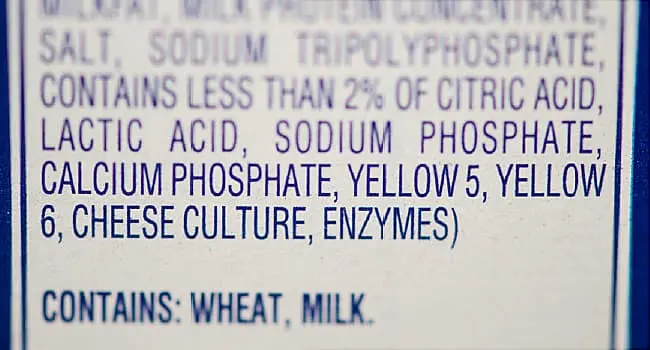July 23, 2015 -- Lisa Baxter carefully reads food ingredient labels when she buys groceries. She carries around a list of things she can and can’t eat, and she has to be extra cautious of food ingredients using the word “phosphate.”
Phosphates leave a metallic taste in her mouth, and they make her very itchy.
“I feel like I have fleas,” says Baxter, 52, a social worker from Queens, N.Y. She’s been living with kidney disease for about 20 years. “I itch from the bottom of my feet through the middle of my hands.”
Baxter gets dialysis three times a week, and she knows that phosphates could make her even sicker. People with kidney disease have a hard time breaking down these minerals, which get added to many processed foods to boost their flavor. Eating too much can trigger bone loss and lead to life-threatening problems like heart disease.
“I’ve seen how devastating phosphorus can be,” says Geoffrey Block, MD, associate clinical professor in medicine at the University of Colorado Health Sciences Center. He’s referring to the mineral that phosphates are made from, and he's been researching its impact on the body for 20 years. “I’ve seen many [kidney disease] patients with amputated limbs.”
Even in healthy people, there is some evidence that eating too much phosphorus might cause problems, although the data isn't definitive. An FDA researcher and a European health safety commission that studied phosphorus have both called for more research on its potential health effects.
“There is accumulating evidence that both the high intakes and the poor balance of intake with other nutrients may place individuals at risk of kidney disease, bone loss, cardiovascular disease, and other chronic health conditions,” concludes a study written in part by Mona Calvo, an expert at the agency’s Center for Food Safety and Applied Nutrition. The study also says that the evidence “remains weak.” [Her study does not reflect FDA policy, and the agency did not make her available for comment.]
Too Much May Be Tied to Trouble
Phosphorus is found naturally in dairy, meat, and plants. It's needed to help cells work properly. Phosphates enhance flavor and moistness in deli meats, frozen food, cereals, cheese, and baked goods, as well as in sodas and prepared iced tea mixes.
“No life form can exist without phosphorus,” says Block, who specializes in treating kidney disease.
The problem may be that we’re eating more of it than we need.
For the 26 million people in the U.S. with kidney disease, phosphorus can build up in the body, Block says. That results in hormonal changes that can cause calcium to pull out of bones, build up in blood vessels, and trigger heart disease, increasing the risk of death.
Nearly one third of the U.S. population eats twice as much phosphorus as the U.S. recommended daily allowance of about 700 milligrams, says Alex Chang, MD, a clinical investigator and nephrologist with the Geisinger Health System in Pennsylvania.
“There is a lot of 'extra' phosphorus in foods that are processed, and Americans eat lots of processed foods,” Chang says.
He co-wrote a 2013 study that evaluated the phosphorus level of thousands of adults without cancer, diabetes, or kidney disease. He found that eating a high amount of phosphorus is linked to more deaths in a healthy U.S. population.
Neither Chang’s study, nor any of the studies published to date, have shown phosphate additives directly cause health issues.
“We don’t know,” Block says. “That’s why we need to do more research.”
Raising Concerns
Phosphates were first approved by the USDA to use in bacon and ham in 1971. They were added to poultry and other meats in the 1980s, says Lucina Lampila, a registered dietitian and fellow at the Institute of Food Technologists, a food science advocacy group.
Today, many grocery store items -- about 45%, according to one report -- use 10 different phosphates in food. Determining how much is in food isn’t easy. If phosphorus is naturally in a food, the amount of phosphates added doesn’t have to be detailed. The FDA classifies added phosphates as a “generally recognized as safe” ingredient. It must be included on the ingredients list, but the exact amount isn’t required.
In an April 2015 study, Chang detailed the amount of phosphorus in some popular drinks and found levels differed from what food companies report. Both Calvo’s and Chang’s studies call for more detailed labeling of the ingredient.
“There is a great need to have accurate information about phosphorus in the marketplace to inform patients, especially [those] with kidney disease,” Chang says.
Lampila, who worked in the food industry for more than a decade, says phosphates are safe. She also says food companies use a minimal amount because “phosphates are self-limiting. If you add too much to a product, you get an off taste.”
The National Kidney Foundation last year encouraged the FDA to require food makers to include the amount of phosphorus on nutrition labels. The FDA said in an email that it doesn't comment on label changes until after they're made.
Recently, the Environmental Working Group, a consumer safety organization, joined the Kidney Foundation in raising concerns about phosphates. The group listed phosphates on its “Dirty Dozen” guide of food additives linked to health concerns that it published last year.
“We feel phosphates need more attention,” says Dawn Undurraga, a consulting nutritionist at the Environmental Working Group.
Until there is more direct evidence, some nutritionists are counseling their clients to limit phosphates in their diets, whether they have kidney disease or not. They suggest you stay away from soda and look for the word “phosphate” on ingredient labels. The word can be found by itself, or in combination with other words, such as “sodium tripolyphosphate.”
“I counsel people to buy food with as few ingredients in them as they can,” says Lisa Hugh, a registered dietitian in Waldorf, MD.
